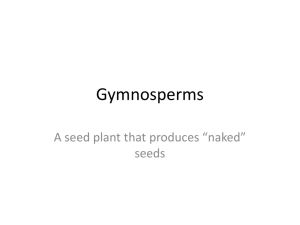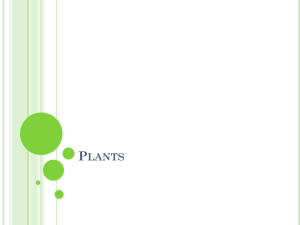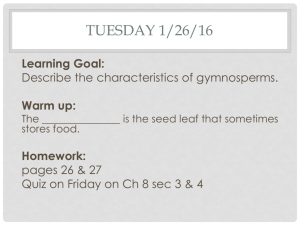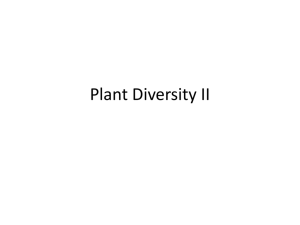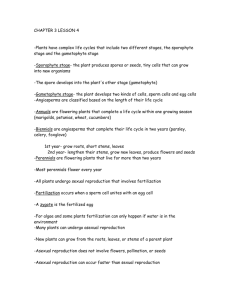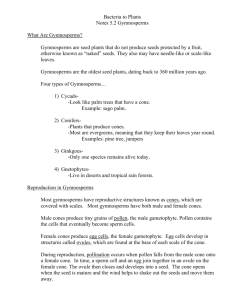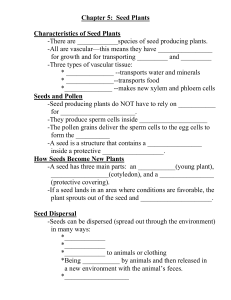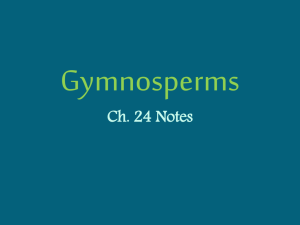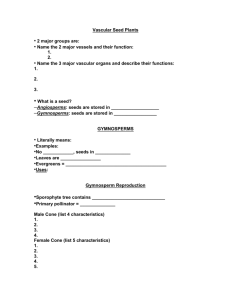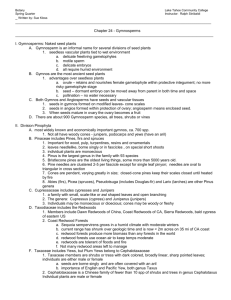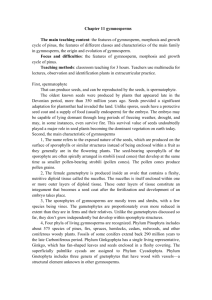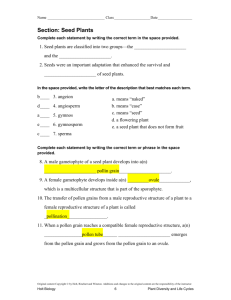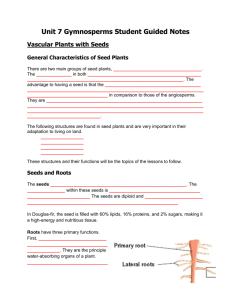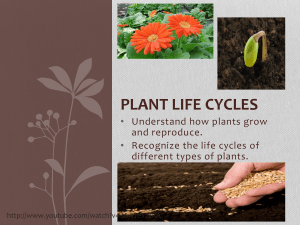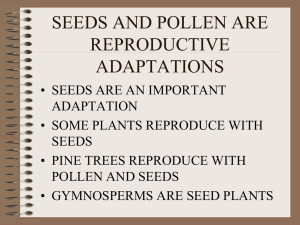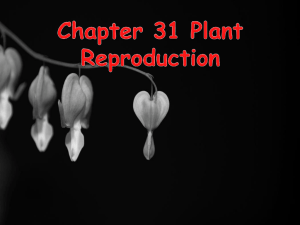2.3 NOTES
advertisement
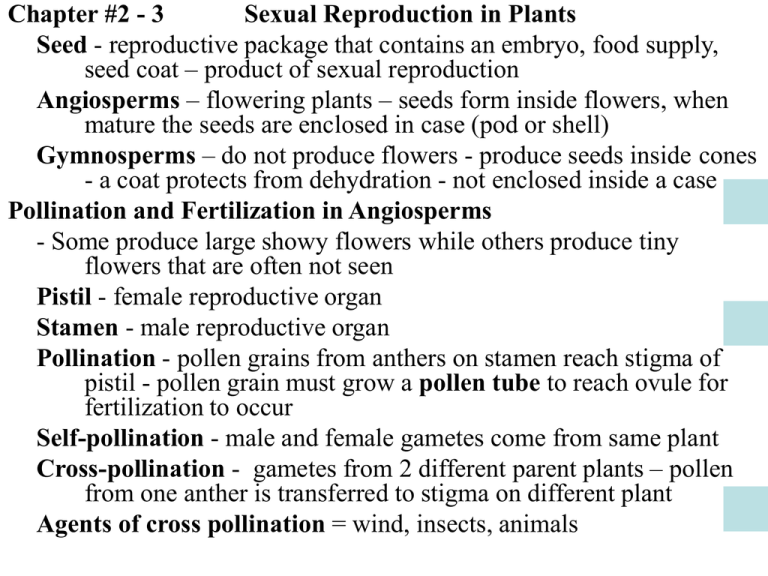
Chapter #2 - 3 Sexual Reproduction in Plants Seed - reproductive package that contains an embryo, food supply, seed coat – product of sexual reproduction Angiosperms – flowering plants – seeds form inside flowers, when mature the seeds are enclosed in case (pod or shell) Gymnosperms – do not produce flowers - produce seeds inside cones - a coat protects from dehydration - not enclosed inside a case Pollination and Fertilization in Angiosperms - Some produce large showy flowers while others produce tiny flowers that are often not seen Pistil - female reproductive organ Stamen - male reproductive organ Pollination - pollen grains from anthers on stamen reach stigma of pistil - pollen grain must grow a pollen tube to reach ovule for fertilization to occur Self-pollination - male and female gametes come from same plant Cross-pollination - gametes from 2 different parent plants – pollen from one anther is transferred to stigma on different plant Agents of cross pollination = wind, insects, animals Self-pollination - male and female gametes come from same plant Cross-pollination - gametes from 2 different parent plants – pollen from one anther is transferred to stigma on different plant Agents of cross pollination = wind, insects, animals Seed Development in Angiosperms - While pollen tube is growing, cells inside ovule begin preparation - Sperm fertilizes egg - zygote - Other cells in ovule have developed into cotyledon which contains stored food Zygote – mitotic division – form many celled embryo with miniature leaf, root, stem Fruit - Developing seed surrounded by walls of ovary which matures to form fruits (pod or case around seed) Seed Dispersal in Angiosperms Fruit often aids in dispersal – seeds not digested - droppings Launch - some able to project their own seeds Hitch - cling to furry animals - fall off when rubbed or removed Wind - fluffy sails that are easily swept away by wind Water - run off of rain carries seeds that fall on ground Dispersal – decreases competition with parent plant Fruit often aids in dispersal – seeds not digested - droppings Launch - some able to project their own seeds Hitch - cling to furry animals - fall off when rubbed or removed Wind - fluffy sails that are easily swept away by wind Water - run off of rain carries seeds that fall on ground Dispersal – decreases competition with parent plant Germination and growth in Angiosperms - process in which a seed begins to grow - some seeds remain dormant or inactive for years and only germinate when they encounter favourable conditions Sexual Reproduction in Gymnosperms - Gymnosperms do not bear flowers - have cones and often called conifers - male cones (pollen) and female (ovule) - in some species male and female cones are produced on separate trees - most have both types of cones on same tree - Seed of gymnosperm contains an embryo, food supply, coat that protects from drying out - Seed not contained in a fruit Sexual Reproduction in Gymnosperms - Gymnosperms do not bear flowers - have cones and often called conifers - male cones (pollen) and female (ovule) - in some species male and female cones are produced on separate trees - most have both types of cones on same tree - Seed of gymnosperm contains an embryo, food supply, coat that protects from drying out - Seed not contained in a fruit Sexual Reproduction in Plants without Seeds - Mosses, ferns, liverworts reproduce without seeds – use spores - Spores are haploid but a spore can develop into a new plant body without fertilization Sporophyte – fine stalks – haploid – produce spores Gametophyte – under right conditions spore develops into a gametophyte that produces gametes Spores – very light - carried great distances - survive unfavourable temperatures and droughts (stay dormant for long periods of time and still produce healthy plants when conditions are better)
